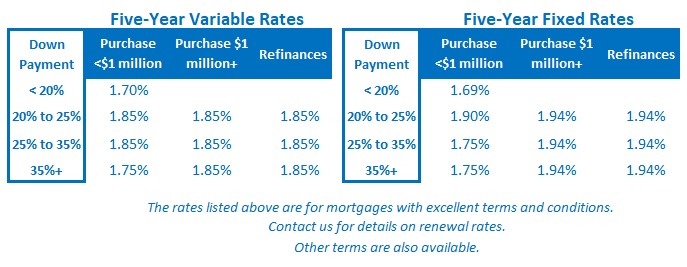Five Must-Read Posts about Canadian Mortgages and Rates
September 28, 2020Canadian Employment Surges (But We’re Not out of the Sugar Maples by a Long Shot)
October 13, 2020Last week Statistics Canada confirmed that our GDP increased by 3% in July on a month-over-month basis, following an increase of 6.5% in June.
In regular times, those would be jaw-dropping results. Today, not so much.
The collapse in our GDP earlier this year has been followed by positive surges in momentum since our economy re-opened. Against that backdrop, comparisons to pre-COVID statistics and trends aren’t helpful, but the latest data do provide useful insights into the current state of our economy.
Here are five highlights:
- Stats Can noted that the current upswing in our economic momentum still leaves our GDP “about 6% below February’s pre-pandemic level.” Bluntly put, our recovery is still in the early innings.
- Stats Can estimated that our GDP increased by an additional 1% in August. That slowing momentum is concerning for two reasons: 1) There is still considerable ground to be regained, and 2) August was a good month for COVID infection rates, weather, and other factors that feed into the GDP data. Many of those tailwinds are now dissipating.
- Stats Can confirmed that all 20 of the sectors it tracks saw increased output in July, but the recovery has been uneven. As this Globe and Mail article noted: “Only five sectors – agriculture, retail, utilities, finance and real estate registered higher output in July than in February, and seven are down by double-digit percentages.”
- Accommodation and food services output increased by 20.1% in July, marking the sector’s third straight month of 20%+ month-over-month gains. Those are impressive results, but this sector was devastated during our economy’s initial lock-down phase and is still not even close to recovering all of its lost ground. Although the rebound of this important sector is good news for the lower-income workers who have been the most adversely affected by the pandemic, they remain highly vulnerable to COVID’s now emerging second wave.
- Further to that point, if our economic momentum was already slowing when our infection rates were falling, one wonders how it will look in the months ahead now that they are surging again. Pedro Antunes, chief economist at the Conference Board of Canada, summed up the situation well when he said, “The bad news is that [before] we were trying to flatten the COVID curve, and I think now COVID is going to flatten our recovery curve.”
The most recent GDP data are consistent with what the Bank of Canada (BoC) expected.
In its most recent policy statement issued in early September (which I summarize here), the Bank assessed that we have now entered the recuperation phase and predicted that it would be “slow and choppy.” It forecast that the positive surges in our economy would wane in the months ahead, and less than a month later, the GDP data are already bolstering that view.
 The Bottom Line: Five-year fixed mortgage rates continued their slow walk-down again last week while five-year variable rates held steady.
The Bottom Line: Five-year fixed mortgage rates continued their slow walk-down again last week while five-year variable rates held steady.
The latest GDP data confirmed that the surge in economic momentum, which accompanied our economy’s reopening, is already slowing and that our recovery is likely to be slow and choppy, just as the BoC predicted.
Given that picture, I expect the current trend of gradually falling mortgage rates to continue over at least the near term.









2 Comments
Loved your segment on the Vancouver Real Estate Podcast, looking forward to your weekly insights.
Thanks Kyle.